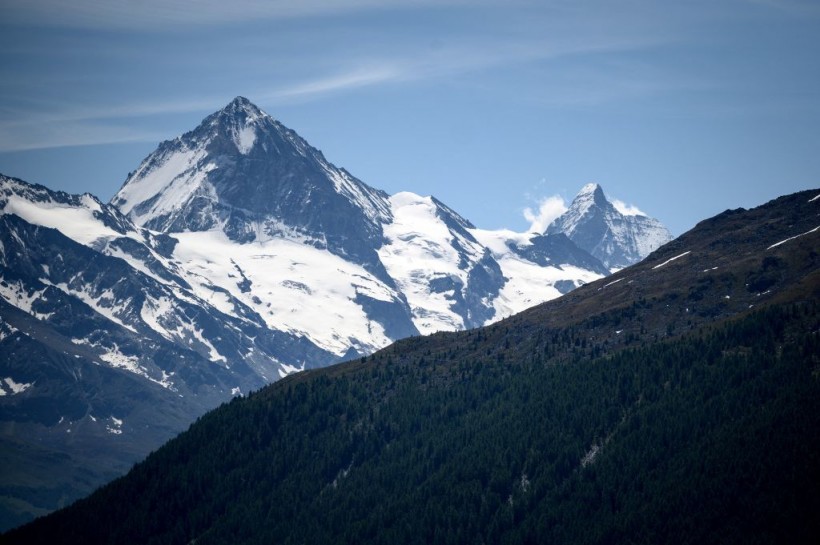The massive effects of climate change are now also seen in the greening of the Alps. This iconic crescent-shaped mountain range has always been associated with images of wintry peaks and snow-covered villages.
However, the new research confirms worries about global warming's effect on the Alpine region. Swiss scientists said that the snowy mountain range is turning green just like the Arctic, allowing non-native species to thrive.

A picture taken on June 26, 2021 from Thyon shows a view of the 4358 meters hight Dent Blanche mountain (L) next to the 4478 meters hight Matterhorn mountain in the Swiss Alps.
Alps Turning Green Visible From Space
The study titled "From White to Green: Snow Cover Loss and Increased Vegetation Productivity in the European Alps," published in the journal Science, reported that a large part of the Alps is now undergoing "greening." The process refers to increased plant growth and spread that accelerates climate change.
Greening has several positive consequences, but the negative consequences outweigh them, Yahoo! News reported. The study's first author Sabine Rumpf from the University of Basel in Switzerland, said that this phenomenon occurs in 77% of the European Alps above the tree line. Earlier estimates suggest that greening has affected 56% of the Alpine region.
Meanwhile, Rumpf and her colleagues found out that the snow covering the region has declined significantly by 10% based on an analysis of 38 years of data. The snow reduction is visible from space. The data was from the eight Earth-observing satellites called Landsat Missions that use remote sensors to collect data.
The information helped scientists calculate the spread of snow cover and vegetation and despite only a 10% snow reduction, researchers noted that its potential impact remains large.
Negative Effects of Alps Turning Green
Aside from its environmental role, snow is also an essential water source for those living in the Alpine region. According to European Environment Agency, around 40% of Europe's drinking water comes from this area which is why the Alps are sometimes called the "water towers."
Although the reduction in snow does not necessarily mean there will be less drinking water, Rumpf explains that it suggests a concerning long-term trend.
Another negative impact of the Alps turning green is the subsequent increase in vegetation that pushes the global warming cycle forward, NBC News reported. It can make taller and denser plant life thrive in areas where it does not normally live and put alpine plant and animal species at risk.
Moreover, greening can also prevent snow cover, which means that an area's ability to reflect solar radiation is also hampered and contributes to the overall warming. Rumpf said that the snow reflects 90% of it back.
Postdoctoral researcher Alexander Winkler from the Max Planck Institute for Biogeochemistry explained how climate change affects vegetation. According to him, beyond greening, there is also browning or the event when plants start to die. Winkler, who is not part of the study, added that greening is also now experienced in the Arctic, which is now referred to by scientists as a bellwether of global climate change.
He also speaks of greening as a response to carbon dioxide emissions. But the greening of the Alps does not necessarily mean it is good because of the negative impacts associated with it. Alpine plants, in particular, are smaller in size and therefore have a smaller role in absorbing carbon dioxide.
RELATED ARTICLE: Melting Polar Ice Caps Distributed Enough Water to Cause a Shift in Earth's Crust Horizontally, Study Reveals
Check out more news and information on Climate Change in Science Times.














